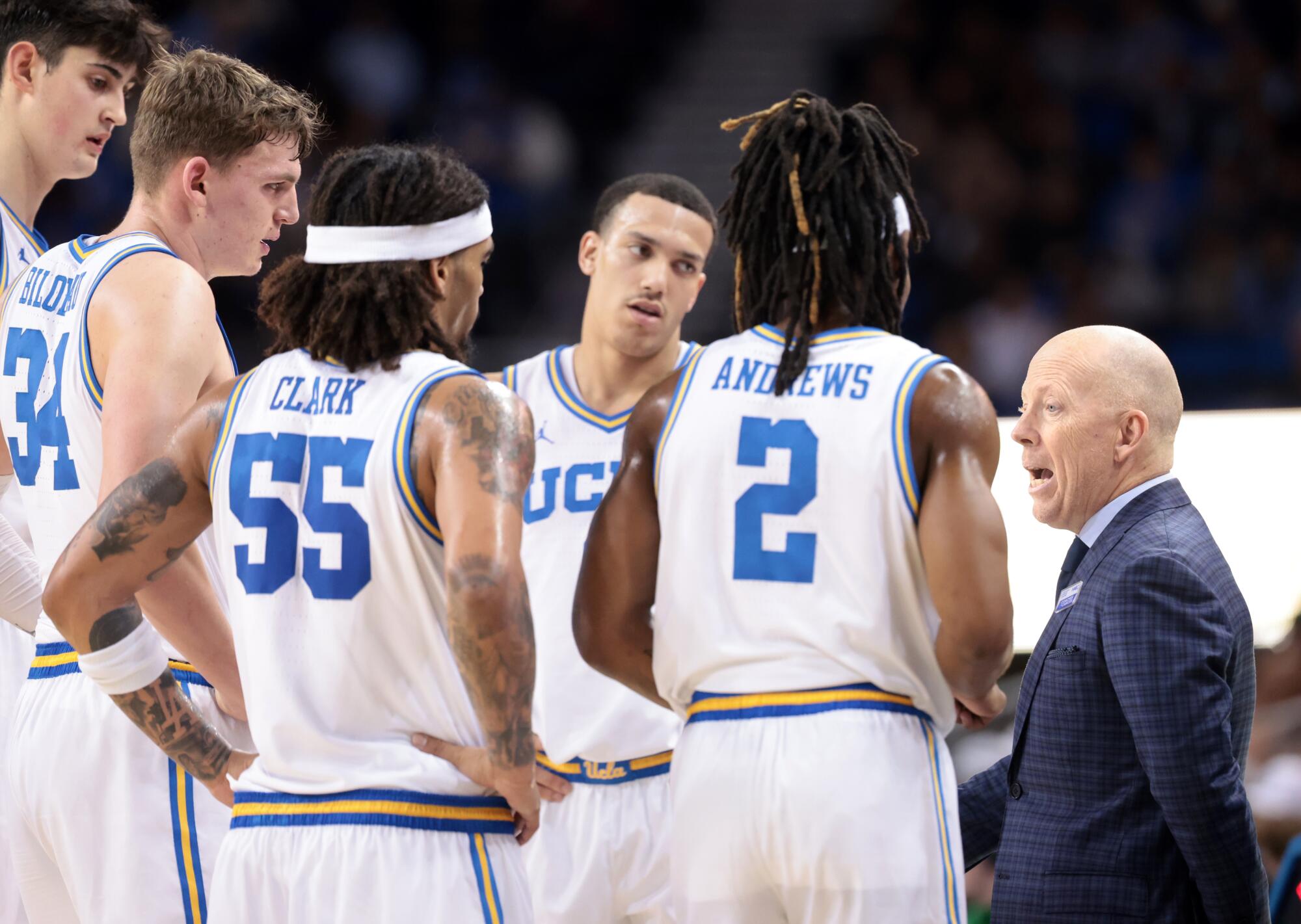The basketball coaches at Santa Monica Faculty had this child.
A wisp of a participant at 5 ft 3, he wasn’t a very robust shooter and didn’t rating a lot. What he lacked in ability he greater than compensated for by diving on the court docket, taking fees, stripping the ball from the man he was defending.
The basketball coaches at Santa Monica Faculty had this different child.
A sturdy 6-5, he may rating and was the type of splendid bodily specimen usually chosen first in pickup video games. However he’d usually lose these video games as a result of he lacked different qualities reminiscent of grit, hustle and dedication.
In a “Scholastic Coach” journal article, Andy Hill outlined what he referred to as the Staff Contribution Index, what turned the favored plus-minus statistic.
(Andy Hill through Scholastic journal)
As he contemplated the variations between the gamers in 1976, Andy Hill, then the crew’s assistant coach, looked for a method to reward the overachiever whereas making an attempt to extract extra out of his much less selfless counterpart.
“I sat there thinking about all the things as a coach you try to get guys to do — dive on the floor, talk on defense, take a charge — and I’m going, that stuff makes you win,” mentioned Hill, a veteran of valuing the crew over the person after three nationwide championship seasons as a reserve guard at UCLA underneath coach John Wood. “And literally in that moment, a lightbulb moment, it’s like, it’s the scoreboard, right?”
In different phrases, how did a participant’s crew do whereas he was on the court docket? Did the crew improve its lead? Lose its lead? Maintain the rating the identical? For example, if his crew outscored its opponent by 9 factors whereas he was on the court docket, the participant was given a plus-nine. If his crew misplaced six factors off its lead, it earned him a minus-six.
Below this metric, the tally for every participant mirrored his affect on the crew. Trumpeting the idea in an article within the January 1977 subject of Scholastic Coach journal, Hill referred to as it the Staff Contribution Index.
Over time, the basketball neighborhood went on to name it one thing else. Take a look at any field rating or hearken to virtually any broadcast, and even essentially the most informal observer will discover references to what was primarily Hill’s invention — the plus-minus.
“I just wish,” cracked Hill, who turns 75 in July, “I got a nickel every time an announcer or analyst mentions plus-minus.”
Mick Cronin stood in a hallway inside Purdue’s Mackey Enviornment finding out the field rating after a troublesome late February loss. UCLA’s lack of ability to generate sufficient stops left its coach looking for solutions.
“Will’s plus-five, everybody else is minus,” Cronin mentioned, referring to heart William Kyle III as he scanned the web page. “We’ve got guys minus-10, minus-19, so we didn’t get the job done defensively.”

UCLA’ coach Mick Cronin talks to his gamers huddled round him throughout a timeout on Jan. 30 at Pauley Pavilion.
(Wally Skalij / Los Angeles Occasions)
Cronin is amongst a military of coaches who routinely point out plus-minus figures as a gauge of how their gamers affect profitable. Lakers coach JJ Redick agreed that the metric was “in general a useful tool” however cautioned that lineups and different components wanted to be considered.
“You can feel like a guy has a huge impact on the game and a huge impact on winning in a 10-point win and he’s a minus-nine,” Redick mentioned. “And you can say, ‘Oh, this guy really cost us tonight’ and he’s a plus-seven. I think game to game, it doesn’t always tell the full story.
“But I think in the aggregate, it’s something as you can normalize things with lineups and with minutes you can see. For example, our team, Dorian Finney-Smith impacts winning when he is on the court.”
At plus-268 in his 43 regular-season video games since arriving in a commerce from Brooklyn, it’s Finney-Smith, a part-time starter — and never superstars Luka Doncic or LeBron James — who led the Lakers in season-long plus-minus. Austin Reaves ranked second on the crew at plus-195, adopted by Doncic (plus-176) and Rui Hachimura (plus-158).
A nine-year NBA veteran, Finney-Smith mentioned he didn’t take into consideration plus-minus till his coaches saved telling him that good issues occurred when he was on the court docket and inspired him to maintain taking part in his profitable model of basketball. What kinds of issues had been these coaches speaking about?
“Just talking, being communicative, knowing my guys around me, being in the right spots for spacing — anything,” Finney-Smith mentioned. “You know, me being a shooter with this team, being a stretch five, puts defenses at a disadvantage because now the center is out on the three-point line where now LeBron and Luka can get in the paint and get easy points, so I’d say it’s a whole bunch of things — playing hard, doing all the little things.”

Lakers ahead Dorian Finney-Smith sprints up court docket towards the Portland Path Blazers on Jan. 2 at Crypto.com Enviornment.
(Robert Gauthier / Los Angeles Occasions)
“Perhaps more important than cold numbers are the ‘intangibles’ that make up the ‘winner’ — guts, leadership, pride, toughness, concentration, attitude, etc.”
— Andy Hill, in his article introducing the “Team Contribution Index”
Some metrics savants aren’t as offered on plus-minus. Ken Pomeroy, one in every of basketball’s most generally revered statistical analysts, pointed to a December 2022 recreation involving the Dallas Mavericks and New York Knicks. Doncic, then with the Mavericks, tallied 60 factors, 21 rebounds and 10 assists on the way in which to ending plus-seven. Teammate Dwight Powell, who logged two factors, no rebounds and one help in half-hour, completed plus-10.
However even going again to his unique article, Hill has lengthy acknowledged the constraints of his idea and its elevated significance given a bigger pattern measurement. Simply verify the NBA’s leaders in season-long plus-minus — Oklahoma Metropolis’s Shai Gilgeous-Alexander (plus-918) and Denver’s Nikola Jokic (plus-594), two of the highest candidates for the league’s most beneficial participant award.
Most of the traits that make Finney-Smith a plus-minus phenom additionally utilized to a type of Santa Monica Faculty youngsters. Katsumi “Kats” Chinen would pour each ounce of his 5-3 body into defending taller counterparts who would invariably put up him up, usually to their nice remorse.
“He spent a lot more time getting posted up than any of the guys who were posting him up had spent on their low-post game,” Hill mentioned, “and he’d strip ‘em clean, he’d be dribbling so fast the other way, your head would spin.”
In the meantime, 6-5 ahead Falstaff Hawkins might need brought about eyes to roll by his singular concentrate on scoring.
“Here was a guy,” Hill mentioned, “who, you know, a dunk and a date is a lot more important than whether we win.”

Andy Hill, who performed for UCLA legendary coach John Wood, shows photographs and memorabilia in his dwelling.
(Carlin Stiehl / Los Angeles Occasions)
That dichotomy made Hill marvel how he may persuade his boss, coach Jim Wagner, to encourage Falstaff to do extra whereas rewarding Chinen with extra taking part in time.
Learning for his grasp’s diploma in schooling, Hill devised what turned his de facto thesis: the Staff Contribution Index. Utilizing a typewriter at UCLA’s Moore Corridor to jot down an article concerning the idea, he despatched a duplicate to Scholastic Coach, questioning if he was onto one thing new or simply regurgitating a system that coaches had been utilizing for years.
Hockey had employed a plus-minus system because the Nineteen Fifties, although it had little relevance to basketball given the low-scoring nature of its recreation. Hill’s Staff Contribution Index concerned seemingly numerous ways in which gamers may assist their crew.
“Perhaps more important than cold numbers are the ‘intangibles’ that make up the ‘winner’ — guts, leadership, pride, toughness, concentration, attitude, etc.,” Hill wrote in his article. “It’s those little things that win for you — playing good defense, taking the charge, setting a solid pick, diving after a loose ball and encouraging teammates. It’s easy to find a shooter; it’s much harder to find a winner. Yet most of the statistical reinforcement is for the shooter; the player who does the little things has to be satisfied with a pat on the rear.”
If anybody may render a verdict on Staff Contribution Index, it was Wood, lately retired after a report run of 10 nationwide titles in 12 years. Nervously, Hill went to see his outdated coach at his modest workplace contained in the Morgan Heart.
“I walk it down to coach and my heart’s going boom-boom-boom,” Hill mentioned, tapping his chest along with his hand. “Why am I doing this? But he reads this article, very thoughtfully, quite attentively, and he looked up and said, ‘That’s a great idea.’ ”
It was their first constructive interplay in years.
“If I hadn’t known Andy Hill was going to be the point guard with me, I wouldn’t have probably gone to UCLA. I thought Andy was that good.”
— Henry Bibby, former UCLA basketball nice
Hill arrived at UCLA in 1968 with hopes of turning into the crew’s subsequent nice level guard.
An All-Los Angeles Metropolis Part participant who had averaged 27.2 factors per recreation at College Excessive, he lived as much as his billing on the Bruins’ freshman crew whereas incomes co-MVP honors alongside Henry Bibby.
Their careers diverged from there. Bibby went on to turn out to be a starter on three nationwide championship groups whereas Hill performed sparingly off the bench as his backup, averaging 2.1 factors in 69 varsity video games.
“I thought Andy was better than I was,” Bibby mentioned, “but sometimes people can be better than you but the coach sees something different in you and they go in your direction and I think they went in my direction. I saw Andy as a superior player than me — he just knew basketball and I didn’t know basketball, I just had probably more talent than he did, athleticism.
“But as I look back now, if I hadn’t known Andy Hill was going to be the point guard with me, I wouldn’t have probably gone to UCLA. I thought Andy was that good.”

Andy Hill, who performed for UCLA legendary coach John Wood, shows a photograph of him with Wood, left, and a basketball signed by UCLA star Invoice Walton in his dwelling.
(Carlin Stiehl / Los Angeles Occasions)
Hill performed so little {that a} {golfing} buddy later joked that he was “the man who starts 5,000 cars” as a result of when he entered the sport everybody left. In reality, even one eventual star thought he needs to be taking part in extra solely to study he couldn’t till he match into the bigger group.
Sidney Wicks, who would go on to turn out to be one in every of faculty basketball’s all-time greats at energy ahead in his remaining two seasons, lagged behind others within the rotation as a sophomore regardless that he may have made a case for being probably the greatest gamers on the crew.
“He was awesomely talented,” Hill mentioned, explaining Wicks’ delayed emergence, “but awesomely talented fitting in within a system was unbeatable.”
One in all Hill’s most enduring recollections of taking part in for Wood was the coach yelling his identify in half the time it took others to say it, reflecting his degree of agitation. Suggestions was restricted about why he wasn’t taking part in extra.
“Coach just shut himself off,” Hill mentioned, “and as a young person, my thought understandably was, he just doesn’t see it, he doesn’t care, whatever. And I felt really bad.”
A few years later, sitting within the den of his Encino condominium, Wood relayed a narrative that defined the way in which he had dealt with the state of affairs. When he was a sophomore in highschool, Wood was pressured to return off the bench because the sixth man regardless that he knew he was the very best participant on the crew. The humiliation of not beginning prompted Wood to strip to his jockstrap and storm out of the gymnasium.
It was one other lightbulb second for Hill.
“I said, ‘Wow,’” Hill mentioned, recalling his response. “It wasn’t that you simply didn’t know [what it felt like]. It’s simply that you simply couldn’t take care of it.’ And he apologized, he [said he] ought to have executed higher, nevertheless it’s so human — I perceive; I imply, you’re crushing this child’s dream and it, and it was like, ‘Oh, OK, you just couldn’t take care of it.‘”
The men reconciled their differences long before Wooden died in 2010. After Hill left coaching following his brief stint at Santa Monica College, he enjoyed immediate success in the entertainment industry. Rising from a movie and television executive to head of his own production company to president of CBS Productions, Hill presided over some of the most successful shows of the 1990s, including “Walker, Texas Ranger,” “Touched by an Angel” and “Dr. Quinn, Medicine Woman.”
Realizing that Wooden’s teachings about collaboration and teamwork had fueled his achievements, Hill referred to as his outdated coach — with a substantial sense of dread — to share this revelation. Would Wood take the decision? Would he even bear in mind him?
Hill’s apprehension dissolved when Wood not solely picked up as Hill spoke his identify on the answering machine but additionally requested him to go to, resulting in an immediate reconnection. They went on to co-author the bestselling ebook “Be Quick — But Don’t Hurry!”

It took awhile earlier than Andy Hill’s plus-minus stat started to catch on extensively in faculty basketball.
(Carlin Stiehl / Los Angeles Occasions)
After the publication of his article, Hill charted the Staff Contribution Index along with his Santa Monica Faculty gamers in what turned out to be his remaining 12 months of teaching.
The idea made a restricted impression with the crew as a result of his boss didn’t consider in its usefulness.
“The guy I was working with,” Hill mentioned, “was far less impressed than John Wooden.”
Hill didn’t suppose a lot about it once more till a number of years in the past, when he began listening to broadcasters routinely point out plus-minus and seeing it listed in field scores. Whereas the NBA adopted the metric in its field scores in 2007, faculty basketball began utilizing it in 2018.
“At that point,” Hill mentioned, “I kind of went, whoa, this has really turned from something off to the side and become totally mainstream.”
In the end, Hill thought-about plus-minus an ode to a beloved pal.
“This is all really a Coach Wooden story, in my mind, you know you dial it back to sort of who he was and what he was about,” Hill mentioned. “If the assignment was, summarize coach, it’s a pretty good summary because the underlying principle was, it is about doing all these little things right.”

